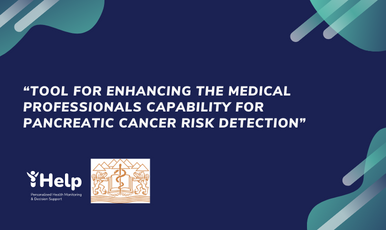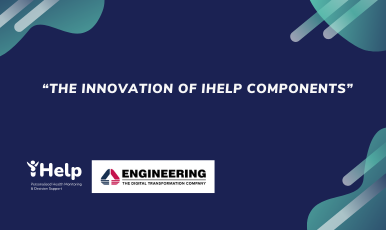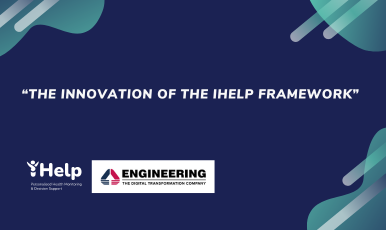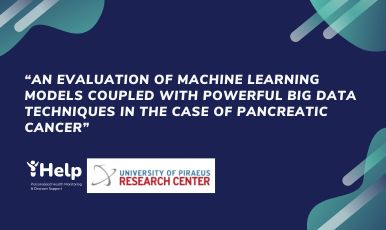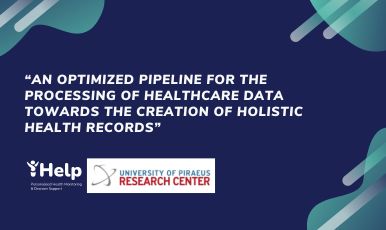From the cradle of medicine and throughout the development of medical art has been proved that the best treatment is the early, focused and well-performed prophylaxis. The best prophylaxis is based on population and healthcare providers understanding of the health risks’ level, present hazards and risk factors, along with the required and possible prevention program.
Among the general population, as well as even among the medical community is still present one under evaluation of the early identification of the present hazards and related to the risk factors for the development of the diseases. This common approach of starting the alert only when the first symptoms of the disease appeared is one of the main factors for the individual and public high level of morbidity in a world, where extremely advanced and sophisticated technical and medical means and methods for diagnosing and treatment are present and are in constant elaboration and development. Notwithstanding the constant work of the specialists into dedicated to the public health medical specialities the understanding of the prophylaxis is still on an unacceptable low level.
The neoplastic processes are by default linked to high social impact and cost, as well as high mortality rate. The medical science is still in research for identifying the proper trigger for neoplastic processes initiation and the earliest pathological changes into cellular and tissue functions. Among the general public, there is still a strong belief that if the origin of cancers genesis is not well defined there is nothing to be done in order to prevent the cancer development. Contrary to this belief, last decades have proven that with activities focused on population, in particular population at risk, screening and active preventive program towards the present risk factors the frequency of several cancers could and is lowered in a timely manner – namely breast, colon and stomach cancers to mentioned just a few. Based on the these positive results a shift into the public health has to be established. The first steps are related to changing the way of thinking and the lifestyle of every ordinary citizen. This could be achieved only if everyone is convinced that following dietary, active physical activity, sleep-rest and etc. regimes will significantly decrease his/her risk for malignant neoplasm development. The contemporary information technologies are offering to the medical community and to the population constantly evolving tools for individual measurement, monitoring and assessment of a multitude of factors that could significantly decrease the risk level for cancers occurrence. These IT capabilities could be of use by all the links of the medical chain – general population – population at risk – healthcare providers of pre-hospital care – hospital medical teams. Moreover, the wide implication of diverse information communication gadgets into the daily life of the contemporary citizen is providing a new powerful tool for both medical and IT communities. Tool to achieve coverage of the majority of the population for communicating the need of the risk prediction, measuring the health risk level, advising for beneficial preventive programs, monitoring the progress into the recommended lifestyle and habits changing, a guided patient at risk and healthcare provider communication.
It is obvious that the first link of this information chain is to create a method for early identification of those that are at risk for cancers development. Both medical specialists from all levels of the healthcare systems and population have to be presented with the newly created IT capabilities for cancers risk prediction. This requirement is even more significant while assessing the probability of rare cancers occurrence – Pancreatic cancer for instance.
The American Cancer Association (1) estimates that Pancreatic cancer accounts for only 3% of the malignant neoplasm diseases in the USA, but the related it deaths are 7% from all cancer deaths.
In Bulgaria, pancreatic cancer is the fourth cause of death from cancers. Its mortality rate is quite high – an average of 15,4/100000; 16,9/100000 for males and 14,0/100000 per females. (2)
These statistics could provide one possible explanation of why these cancers are seldom diagnosed into their early stages when there are possibilities for cure. (3) The main reason is remaining the fact that most of the symptoms are becoming disturbing and alarming only into the advanced stages when the cancer has already progressed and spread to other organs. Therefore, it is becoming extremely important for increasing the survival level is to increase awareness regarding the symptoms that could predict possible Pancreatic cancer development. The medical practice proves that the majority of patients are diagnosed while they looking for medical assistance related to non specific complaints thinking for other diseases.
Based on the low incidence of pancreatic cancer, the population-based large scale screening is not performed, also it is not planned. On the other hand, it is highly recommendable a thoroughly performed instrumental, genomic investigation be performed for those patients assessed at high risk for cancer development. These tests could detect cancer in its early stages when an aggressive combined therapy including surgery, chemotherapy and radiotherapy is increasing the 5-year survival expectance to acceptable levels. Nowadays the best medical practice is focused on strategies for early diagnosing including the most advanced techniques – endoscopic ultrasound and magnetic resonance are considered as a must in case pancreatic cancer elevated risk is assessed. (4, 5) The results of the early detection are extremely positive, therefore one element of the comprehensive strategy for decreasing the lethality of Pancreatic cancer is linked to raising the medical community and population as a whole for those early detectable risk factors – habits, diet, obesity, comorbidities, family history etc. (6, 7)
The iHelp project is focused on the implementation of IT into Pancreatic cancer risk prediction. The IT platform to be created is to support not only the diagnostic process but to couch patients at risk what to change in order to reduce and if possible to eradicate the risk factors associated with the evaluated risk.
Medical University of Plovdiv (MUP) is responsible for developing the required courses of action related to the increasing medical community, the healthcare providers, awareness of the most common symptoms, complaints, comorbidities, family and illness history that are associated with elevated health risk for Pancreatic cancer development. The first planned and already completed actions is to perform extended retrospective analysis of hospital records for patients with Pancreatic cancer for 5-year period and to extract those common related to the cancer patient data. These data will become basis for risk predictor creation. The second layer of the pilot led by the MUP is to perform a survey among the prehospital and hospital medical specialists that are expected to be the first to meet with patients at risk – general practitioners, registered nurses at the community level, gastroenterologists, general and abdominal surgeons, internal medicine and oncologist. The survey objective is to assess the level of awareness of these specialists regarding those factors that increase the risk for Pancreatic cancer development.
iHelp platform will include not only the risk predictor. Based on the thoroughly performed analyses of the measures that are part of the best clinical practice related to diagnostic procedures to be implemented for Pancreatic cancer diagnosis and required measures to be undertaken by the patients at risk an advisory system addressing medical professionals and patients at risk will also be created. The core of the IT platform is the Artificial Intelligence (AI) tool that will evaluate the present risk for each examined patient and inform the healthcare provider regarding the risk level for Pancreatic cancer. When an elevated risk level is detected the AI will switch to the Advisor that will provide a proposal to the medical specialists on what diagnostic procedures are to be further performed for diagnostic clarification (consultations, imaginary, laboratory and genomic tests, invasive procedures etc.). The advisor will also recommend and measures addressing the patient at risk – changing the lifestyle, habits, diet, physical activity etc. Thus the iHelp will be of use to the medics and to the patients at risk. Moreover, the platform will extend its benefits with monitoring capability that will control the status and the achieved improvement/deterioration into the fulfilment of the preventive program. Based on the collected results of the monitoring tool the alert with further recommendation will again be sent to the medics and patients at risk.
Implementation of this platform is expected to become a valuable tool that will enhance the medical community capability to early diagnose the patients at risk for Pancreatic cancer and thus to reduce the mortality rate of this malignant neoplasm.
This will be measured by the second, after iHelp implementation into prehospital and hospital premises practice survey regarding the diagnosis and prevention of Pancreatic cancer.
The platform will add significant value to the medical practice related to this rare but extremely poor prognosis malignant process. iHelp is to become the tool for achieving an effective understanding of the comprehensive activities towards raising population and healthcare providers awareness regarding all risk factors associated with elevated levels of Pancreatic cancer morbidity.
Reference:
- Key Statistics for Pancreatic Cancer
- Bulgarian National Cancer Registry
- Pancreatic cancer. Kaur S, Baine MJ, Jain M, Sasson AR, Batra SK. Early diagnosis of pancreatic cancer: challenges and new developments. Biomark Med. 2012;6(5):597-612. doi:10.2217/bmm.12.69
- He XY, Yuan YZ. Advances in pancreatic cancer research: moving towards early detection. World J Gastroenterol. 2014 Aug 28;20(32):11241-8. doi: 10.3748/wjg.v20.i32.11241. PMID: 25170208; PMCID: PMC4145762.
- Okano K, Suzuki Y. Strategies for early detection of resectable pancreatic cancer. World J Gastroenterol. 2014 Aug 28;20(32):11230-40. doi: 10.3748/wjg.v20.i32.11230. PMID: 25170207; PMCID: PMC4145761.
- Lu C, Xu CF, Wan XY, Zhu HT, Yu CH, Li YM. Screening for pancreatic cancer in familial high-risk individuals: A systematic review. World J Gastroenterol. 2015 Jul 28;21(28):8678-86. doi: 10.3748/wjg.v21.i28.8678. PMID: 26229410; PMCID: PMC4515849.
- Petrone MC, Arcidiacono PG. New strategies for the early detection of pancreatic cancer. Expert Rev Gastroenterol Hepatol. 2016;10(2):157-9. doi: 10.1586/17474124.2016.1122521. Epub 2015 Dec 14. PMID: 26582179.

